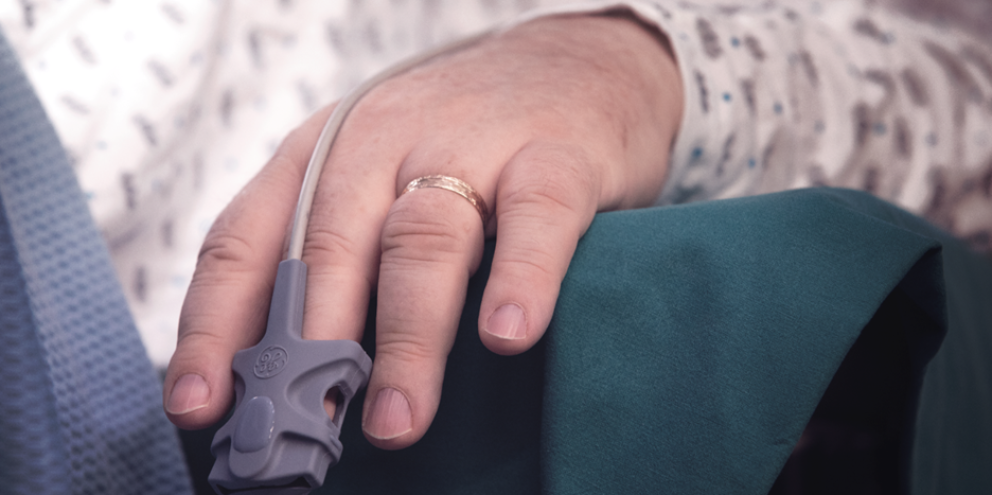
The COVID-19 pandemic helped bring these health inequalities into sharp focus, exposing issues that range from unequal access to testing and vaccines, to disparities in housing and employment that can contribute to increased risk of infection1.
In working to improve the quality and accessibility of care for everyone, healthcare organizations need to examine measures, large and small, that can help rectify areas of inequity. Clinical accessories like cords, sensors, blood pressure cuffs and face masks can be part of the solution. Although seemingly insignificant, these supplies can play a meaningful role in making healthcare more universally available. Here are four ways in which accessories can contribute to more equitable care.
1. Accurate SpO2 regardless of skin tone
COVID-19 sharply increased the necessity for accurate blood oxygen saturation measurement. Concurrently, a study published in The New England Journal of Medicine reported that Black patients assessed with pulse oximetry were three times as likely as white patients to have undetected hypoxemia2. In February 2021, the U.S. Food and Drug Administration issued a safety communication citing the possibility of limitations in SpO2 accuracy for patients with darker skin3.
This research highlighted the importance of being ever vigilant for areas of racial inequality in medical technologies. In pulse oximetry specifically, innovations in measurement now enable higher accuracy, and thus more reliable diagnosis of low oxygen saturation, across a wide range of skin tones4.
2. Comfortable care for patients with disabilities
Equal access to healthcare services is an essential provision of the Americans with Disabilities Act. In addition, the Disability Rights & Education Fund notes that features like height-adjustable exam tables, padded rails and supports, and audiovisual signals are required for patients with mobility, sensory, and other limitations5. Proper accessory choices can help caregivers take accessibility a step farther, adapting any space for individual patients’ needs. For example, pliable cables, lead wires, tubes, and other connectors can support more ergonomic and comfortable care environments.
3. Accommodating patients of all sizes
While not often recognized, patients’ weight is a part of the equity conversation, and an increasingly important one. Care for overweight and obese patients can be compromised if equipment is not designed or sized to address their needs.
The U.S. Centers for Disease Control and Prevention reports that more than 42% of Americans are now considered obese7. A story in The New York Times serves to illustrate the plight of patients who feel stigmatized or under-valued in healthcare because of their weight8. The article highlighted the experience of a patient who weighed 502 pounds, while the scale in her doctor’s office registered no more than 350 pounds.
Accommodating overweight and obese patients includes using appropriate accessories, such as non-invasive blood pressure cuffs that properly fit the upper arm or forearm, and anesthesia masks that fit and contour patients’ faces regardless of their shape.
4. Combatting supply shortages, promoting efficiency
COVID-19 cast light on financial and resource issues in rural and urban hospitals alike. On the rural side, hospitals in small and disadvantaged communities face financial stresses that can limit their capacity to care for vulnerable populations. The American Hospital Association reports that in 2013-17, more than twice as many hospitals closed than during the previous five years9.
Meanwhile, COVID-19 placed additional strain on many safety-net hospitals in urban areas, putting them in "unsustainable and untenable situations" as they competed for resources. Shortages of supplies added to the disparities facing patients reliant on these major facilities for low- or no-cost care9.
These challenges demonstrate the value of clinical solutions that use fewer resources. Interoperable accessories, such as blood pressure cuffs, provide an example. The ease of plugging and unplugging these cuffs as patients transfer from room to room can save money and labor in times of limited resources.
Improving healthcare equity: The way forward
Disparities in healthcare access exposed by COVID-19 are not new. They have existed for decades and are multidimensional. Meaningful progress to combat them demands paying attention to even seemingly minor issues. Decisions about supplies and advancing technologies must consider access to quality care in the context of patients’ needs as related to ethnicity, income, size and disability.
References
- https://www.cdc.gov/healthequity/whatis/?CDC_AA_refVal=https%3A%2F%2Fwww.cdc.gov%2Fcoronavirus%2F2019-ncov%2Fcommunity%2Fhealth-equity%2Frace-ethnicity.html
- https://www.nejm.org/doi/10.1056/NEJMc2029240
- https://www.fda.gov/medical-devices/safety-communications/pulse-oximeter-accuracy-and-limitations-fda-safety-communication?utm_medium=email&utm_source=govdelivery
- https://clinicalview.gehealthcare.com/white-paper/accuracy-trusignal-spo2-technology?utm_medium=cpc&utm_source=google&utm_campaign=USC-PS-2021-REG-AlwaysOn&utm_term=&utm_content=12518725892&npclid=Cj0KCQjwzYGGBhCTARIsAHdMTQzrg-FdhXVdcP5dVqE91qEe91t0Aunz8hUjoayPbrXXlAZmPq2Ql5MaAsRfEALw_wcB&gclid=Cj0KCQjwzYGGBhCTARIsAHdMTQzrg-FdhXVdcP5dVqE91qEe91t0Aunz8hUjoayPbrXXlAZmPq2Ql5MaAsRfEALw_wcB
- https://dredf.org/public-policy/dredfs-model-comments-on-the-doj-anprm/medical-equipment/
- https://www.cdc.gov/obesity/data/adult.html
- https://www.nytimes.com/2016/09/26/health/obese-patients-health-care.html
- https://www.aha.org/system/files/2019-02/rural-report-2019.pdf
- https://www.beckershospitalreview.com/finance/unsustainable-and-untenable-poor-finances-push-massachusetts-safety-net-hospitals-to-brink.html








